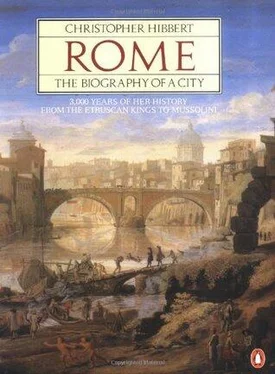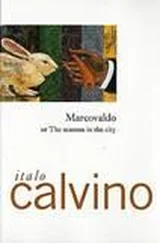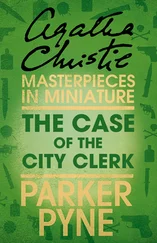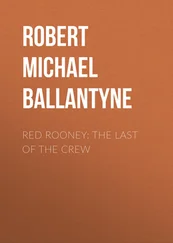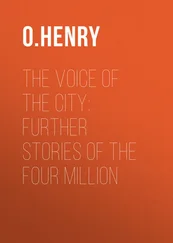Christopher Hibbert - Rome. The Biography of the City
Здесь есть возможность читать онлайн «Christopher Hibbert - Rome. The Biography of the City» весь текст электронной книги совершенно бесплатно (целиком полную версию без сокращений). В некоторых случаях можно слушать аудио, скачать через торрент в формате fb2 и присутствует краткое содержание. Жанр: Культурология, Искусство и Дизайн, на английском языке. Описание произведения, (предисловие) а так же отзывы посетителей доступны на портале библиотеки ЛибКат.
- Название:Rome. The Biography of the City
- Автор:
- Жанр:
- Год:неизвестен
- ISBN:нет данных
- Рейтинг книги:3 / 5. Голосов: 1
-
Избранное:Добавить в избранное
- Отзывы:
-
Ваша оценка:
- 60
- 1
- 2
- 3
- 4
- 5
Rome. The Biography of the City: краткое содержание, описание и аннотация
Предлагаем к чтению аннотацию, описание, краткое содержание или предисловие (зависит от того, что написал сам автор книги «Rome. The Biography of the City»). Если вы не нашли необходимую информацию о книге — напишите в комментариях, мы постараемся отыскать её.
Rome. The Biography of the City — читать онлайн бесплатно полную книгу (весь текст) целиком
Ниже представлен текст книги, разбитый по страницам. Система сохранения места последней прочитанной страницы, позволяет с удобством читать онлайн бесплатно книгу «Rome. The Biography of the City», без необходимости каждый раз заново искать на чём Вы остановились. Поставьте закладку, и сможете в любой момент перейти на страницу, на которой закончили чтение.
Интервал:
Закладка:
27. The VILLA MATTEI, built in 1582, was reconstructed in the mock Gothic style by an Englishman at the beginning of the nineteenth century. Parts of the DOMUS AUGUSTANA were incorporated into the structure. Now known as the VILLA CAELIMONTANA, its grounds are a public park. The Egyptian obelisk, dedicated to Rameses II, is at the end of the short avenue in front of the entrance. It was probably taken from the Temple of Isis on the Capitol where it had stood at the foot of the Aracoeli steps. It was presented to Ciriaco Mattei by the Senate. The PALAZZO MATTEI DI GIOVE off the Via dei Funari was built by Carlo Maderno in 1598- c . 1611 for the rich Asdrubale Mattei, part of whose collection of antique sculptures can be seen in the courtyard. The palace was extended in 1613–17. Beneath the windows of the palace, in the Piazza Mattei, is the charming FONTANA DELLE TARTARUGHE (tortoises). This was probably designed by Giacomo della Porta and executed in 1585 by Taddeo Landini.
28. The various buildings which were constructed in the early Middle Ages on the ruins of the TABULARIUM included a palace for the Senators. This was built after the revolt of 1143 for the fifty-six Senators then elected. The number of Senators was soon drastically reduced, and after 1358 there was only one. The present PALAZZO DEL SENATORE, designed by Giacomo della Porta and Girolamo Rainaldi, replaced the earlier palace in 1582–1605. The twin flight of steps overlooking the Piazza del Campidoglio was designed by Michelangelo (see note 5, Chapter 11). The clock tower which dominates the piazza is by Martino Longhi the elder ( c . 1580).
29. The remnant of a medieval tower known as the CASA DEI CRESCENZI on the corner of the Via del Teatro di Marcello and the Piazza della Bocca della Verità probably belonged to the Crescenzi, one of the most powerful families in Rome towards the end of the tenth century. It dates from the twelfth century and contains fragments of classical monuments embedded in the brickwork.
6. SAINTS, TYRANTS AND ANTI-POPES
1. In the ninth century, the Benedictines took over a monastery formerly occupied by Greek monks on the highest point of the Capitoline hill, the site of the present church of S. MARIA D'ARACOELI. The Benedictines built the original church in 1250, parts of which are preserved in the present structure. In the Middle Ages it became a meeting place such as the FORUM had formerly been. Cola di Rienzo often harangued the people from its steps. Later the Benedictines handed it over to the Franciscans who made it their headquarters in Rome. The fine, steep flight of steps in marble, 122 in number, leading from the Piazza d'Aracoeli to the church, was built in 1348. The statue (by Girolamo Masini, 1887) between the steps and the CORDONATA is of Cola di Rienzo who was, mistakenly, believed to have been the first to mount them at their inauguration. In fact, he had fled from Rome shortly before they were finished. The interior of the church is in the form of a basilica with a nave and two aisles and eleven antique columns on each side. The painting on the ceiling commemorates the great naval battle of Lepanto where Christian forces defeated the Turks in 1571. The church was used as the culminating point of a Triumph offered that year by Rome to the commander of the papal militia, Marcantonio Colonna, who played a leading part in the battle. The church takes its name from an altar - ara coeli – which the Emperor Augustus was supposed to have raised after a vision in which he saw the heavens open and the Madonna and Child appear. This altar was for a long time taken to be the thirteenth-century altar upon which stands the urn that is said to contain the ashes of St Helena, the Emperor Constantine's mother. The magnificent frescos of the life of S. Bernardine of Siena in the Bufalini chapel are by Pinturicchio.
2. The BASILICA OF THE SS. APOSTOLI next to the PALAZZO COLONNA was originally built during the pontificate of Pelagius I (556–61), by Justinian's great general, Narses, to celebrate his victory over the Gothic leader, Totila, in 552. It was restored by Pope Martin V (1417–31), by Pope Sixtus IV (1417–84) and again by Pope Pius IV (1559–65). It was almost entirely rebuilt by Francesco Fontana and his father, Carlo, who finished it in 1714 during the pontificate of Clement XI (1700–1721). Finally it was given a simple, neo-classical façade to a design by Giuseppe Valadier in 1827. The large late-fifteenth-century portico is by Baccio Pontelli.
3. The church of S. MARCELLO is in a small piazza off the Corso on the right going north just after the PALAZZO CHIGI-ODESCALCHI. It was founded in the fourth century. The early church was destroyed by fire in 1519 and rebuilt to the designs of Jacopo Sansovino. The Baroque façade (1682–3) is by Carlo Fontana. It is said to cover the site of the stables of the central post office of imperial Rome where Pope St Marcellus I (304–9) was condemned to work by the Emperor Maxentius.
4. The church of S. LORENZO IN PANISPERNA, dedicated to St Laurence the Martyr, was originally built some time before the sixth century on the traditional site of the saint's martyrdom on the Viminal hill. It was restored in the eighth century and completely rebuilt by Pope Boniface VIII for the Jubilee Year of 1300. Another renovation was carried out in 1575, and nothing is now left of the ancient building. The church stands back from the street behind a court which was surrounded by the convent of the Poor Clares where St Bridget of Sweden begged for alms. The Via Panisperna, which runs like a switchback over the slopes of the Quirinal, the Viminal and Esquiline hills, may possibly have taken its name from the bread ( pane ) and ham ( perna ) that the monks at the church of S. Lorenzo distributed to the poor or, more probably, from two families, the Panis and the Perna, who lived there.
5. The church of S. MARIA SOPRA MINERVA is in the Piazza della Minerva close to the PANTHEON. It was built on the site of a Temple of Isis in about 1280 by the Dominicans, its architects being two of the friars. The adjoining convent was for a long time the headquarters of the order and is still run by them. This is the only ancient church in Rome built in the Gothic style. The burial place of several popes and members of the leading Roman families, it contains beautiful chapels in the classical and early Renaissance styles. Among these is the Carafa Chapel which was commissioned by the Neapolitan Cardinal Oliviero Carafa. This contains Filippino Lipp's superb fresco of the Assumption of Our Lady (1489) and the tomb of the Carafa Pope, the formidable Paul IV. Michelangelo's statue of Christ bearing the Cross is on the left of the high altar. It was carved as a completely nude figure in Florence in 1519–20 and in 1521 was sent to Rome where the finishing touches were inexpertly supplied by Michelangelo's assistant, Pietro Urbano. The gilded drapery and sandals were added later. The relics of St Catherine of Siena are preserved beneath the altar. There is a charming late-thirteenth-century mosaic Madonna and Child beside the fine Cosmatesque tomb of Bishop Durand of Mende (d. 1296) on the left of the Carafa Chapel.
7. ‘THE REFUGE OF ALL THE NATIONS’
1. The stupendous FONTANA DI TREVI is set in a small piazza of the same name and can be reached from the Corso by the Via dei Sabini. It was the master work of Nicola Salvi who began it for Pope Clement XII in 1732. Salvi died before it was finished and Gianpaolo Pannini supervised its completion in 1762. The water from this fountain feeds the fountains of Piazza Navona and Piazza Farnese as well as the nymphaeum in the VILLA GIULIA. The fountain probably takes its name from the tre vie , the three streets which meet in the piazza. In the nineteenth century it was said that visitors to Rome who drank water from the fountain would come back to Rome. Nowadays tourists throw coins into the basin to ensure their return to the city.
Читать дальшеИнтервал:
Закладка:
Похожие книги на «Rome. The Biography of the City»
Представляем Вашему вниманию похожие книги на «Rome. The Biography of the City» списком для выбора. Мы отобрали схожую по названию и смыслу литературу в надежде предоставить читателям больше вариантов отыскать новые, интересные, ещё непрочитанные произведения.
Обсуждение, отзывы о книге «Rome. The Biography of the City» и просто собственные мнения читателей. Оставьте ваши комментарии, напишите, что Вы думаете о произведении, его смысле или главных героях. Укажите что конкретно понравилось, а что нет, и почему Вы так считаете.
